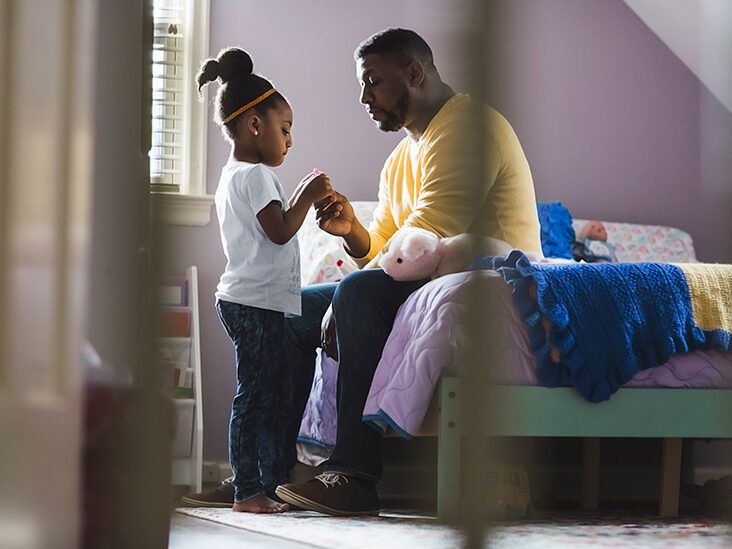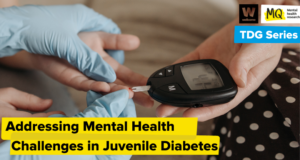
Black youth are facing more mental health concerns than ever. As adults, it’s important to listen to them and direct them to seek help.
Being young can be hard enough as is — grades, hormones, and life choices can impact the mental health of any child.
Despite this, a
Also, Black teens with mental health conditions are less likely to seek treatment, though they’re more likely to experience higher rates of depressive moods, according to a 2019 study.
The global COVID-19 pandemic has both helped and hindered this statistic.
While the state of Black youth and their mental health seem discouraging, there are ways you can help.
According to the CBC, data shows that the current generation of Black teens and children have higher rates of suicide than previous generations.
And the 2021 Mental Health in American report states that this rate is increasing faster than any other ethnic group. However, historical data showed that Black youth died by suicide at low rates.
Though Black youth experience similar mental health challenges as their non-Black peers, the American Academy of Pediatrics (AAP) named racism as one of the leading causes of the mental health concerns that Black youth face.
According to a 2020 study, Black teens may experience up to five instances of discrimination per day on average.
Despite these findings, a 2016 study found that Black youth are still half as likely as their white counterparts to seek help for their mental health.
Moreover, when Black youth seek mental health treatment, data shows that their mental health concerns are often misdiagnosed.
A Rutgers University study suggests that Black Americans who have severe depression are more likely to be misdiagnosed with schizophrenia. Another
Both studies show that racial bias and a lack of cultural competency cause misdiagnoses.
School-to-prison pipeline
Discrimination that Black teens may face daily often comes in bullying from peers, but sometimes it may come from either conscious or unconscious bias from adults.
A 2018 report states that Black children are also more likely to be punished more harshly for the same behaviors as their white classmates. This perpetuates the school-to-prison pipeline or the instance that youth are more likely to be incarcerated after consistently experiencing harsh school punishments.
Although Black youth aren’t as likely to get mental health treatment as their non-Black peers, it’s not because they don’t need it.
According to a
Many factors may contribute to Black youth seeking help less often than their peers.
Cultural stigmas
The CBC task force report notes that Black youth, especially Black boys, tend to seek mental health help as a last resort treatment, as they fear they may be ridiculed by their friends and loved ones.
The report states that Black youth may fear that their friends will tease them for having mental health concerns, and family will encourage them to keep their problems hidden from outsiders.
Distrust in healthcare systems
The same report also states a cultural mistrust in healthcare systems that keeps Black youth from seeking help for their mental health.
The report calls for the need for culturally competent therapists and mental health professionals to better assist their patients who are in underrepresented groups.
A difference in expressing symptoms
According to the CBC task force report, Black youth may not always vocalize their mental health concerns like their white peers do, leading to a lack of proper treatment.
In many cases, Black youth will express symptoms of depression by having behavioral or conduct issues. In other cases, Black youth may show somatic symptoms — or physical symptoms such as a stomach ache.
COVID-19 has added complex layers to the daily lives of individuals across the world.
The pandemic forced businesses and schools to close or operate virtually for an extended period of time. This allowed people — especially youth — to spend more time with their families.
But a
Black youth also expressed discomfort in leaving their homes and risking the potential of getting themselves or their loved ones sick.
Racial health disparities during COVID-19
In addition to the change in social environments that Black youth have been experiencing during the pandemic, they also encounter the added health disparities that many Black, Indigenous, and People of Color (BIPOC) experience.
- discrimination
- inaccessibility to healthcare
- gaps in education and wealth
- housing inequities
Also, research from 2022 shows that Indigenous, Pacific Islander, and Black Americans have the highest mortality rates for COVID-19. Black Americans account for 14.3% of COVID-19 deaths nationwide, although Black people account for only 12.9% of the population.
Mandates have been helpful
Despite the change in social environments and the disproportionate rates at which BIPOC have been affected by COVID-19, some research suggests that stay-at-home mandates during the pandemic may have been helpful for some youth.
A 2021 study — though focused largely on Hispanic youth — showed evidence that better family functioning contributed to lower mental health symptoms in youth, especially for youth who experienced significant mental health challenges before the pandemic.
Black children can encounter a high amount of mental stress, so it’s important to let them know they’re not alone and that someone is willing to step in and help them.
Talk with your children
Try to speak with your children regularly, giving them a safe space to express themselves and validate their feelings and experiences. This will also give you time to watch for any signs of distress.
According to Mental Health America, some signs to look out for that a child may be having mental health challenges can include:
- problems with concentration or memory
- appetite changes
- feelings of sadness, emptiness, or worthlessness
- extreme panic or worry
- restlessness or change in sleeping habits
- lost interest in hobbies or activities
- hearing or seeing things that others don’t or other new, repetitive behaviors
Some behaviors may signal more serious mental health complications, such as suicidal thoughts. These can include:
- obsession with the subject of death
- increased use of drugs and alcohol or other risky behaviors
- little or no interest in the future
- drastic changes in personality
Have open conversations about seeking help
Having open conversations concerning mental health and leaving room for your child to ask questions about how they’re feeling is crucial.
Conversations could be about mental health itself, or they may be about factors that cause mental health challenges, such as racism. And try not to be afraid to ask your child the hard questions, such as if they’re having thoughts of suicide.
When speaking with your child, try to be empathetic and reinforce that their feelings aren’t their fault and that there’s nothing wrong with experiencing negative mental health symptoms.
Try to encourage seeking outside help and, if possible, destigmatize the idea of seeking therapy and treatment.
Seek culturally competent therapists
If your child needs therapy, consider seeking a culturally competent therapist equipped to address their mental health concerns about their identity.
- Is this therapist familiar with your child’s culture, beliefs, and values?
- Are they willing to learn more about your child’s culture, beliefs, and values?
- Do they have experience treating patients with your child’s cultural background?
- Have they had cultural competency training?
- How do they plan to include cultural aspects in therapy sessions and plans?
- Are they familiar with your child’s language or dialect?




